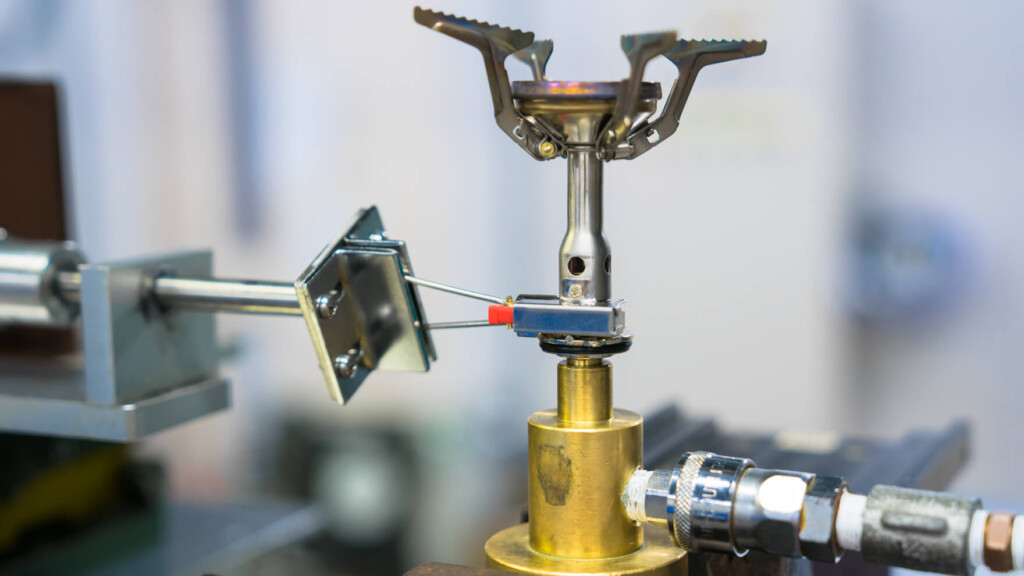
The pre-release inspection of the gas stove was even more serious than I imagined. ~Japan Gas Equipment Inspection Association Tokyo inspection survey tour~
This may be a surprise, but have you ever heard of the term "compatibility test" for gas equipment?
It is often called the "gas inspection," and although I knew it through this word, I honestly had never thought about what was going on.
Gas stoves and gas stoves that we use casually everyday are tools that handle dangerous materials called fire, so in order to be sold in Japan, they must be inspected and certified by a third party in accordance with the law for their safety. A conformance test is a test performed by a nationally registered testing agency so that we can always use our products in the field with peace of mind.
According to one theory, Japanese gas inspections are said to have the strictest standards for passing the world, and what exactly is this conformance test actually doing? The other day, with the cooperation of the Japan Gas and Petroleum Equipment Manufacturers Association, I was blessed with the opportunity to actually show the test.
When you think of factories, you may have seen facilities from manufacturers, such as sewing factories and assembly factories, but it is rare that you can look into the facilities that are "testing" their performance. This time, we would like to take a look at the safety of gas equipment and the importance of inspections through our inspection tour.
table of contents
- table of contents
- To the Tokyo Inspection Center of Japan Gas Equipment Inspection Association
- It's more serious than I imagined. This is a Japanese conformance test!
- What is the "PSLPG Mark" title given only to those who pass a rigorous test?
- No matter how safe the product is, be careful of carbon monoxide poisoning.
- To ensure safe use, check and maintain before and after use.
- summary
table of contents
- To the Tokyo Inspection Center of Japan Gas Equipment Inspection Association
- It's more serious than I imagined. This is a Japanese conformance test!
- What is the "PSLPG Mark" title given only to those who pass a rigorous test?
- No matter how safe the product is, be careful of carbon monoxide poisoning.
- To ensure safe use, check and maintain before and after use.
- summary
To the Tokyo Inspection Center of Japan Gas Equipment Inspection Association

So, I went out to one of the three testing stations in Japan (the only gas stove inspection station in Japan) and the Japan Gas Equipment Inspection Association Tokyo Inspection Station is a 10-minute bus ride from Akabane Station in Tokyo, located in a quiet residential area in Itabashi Ward.
The director, Morishita, welcomed us at the testing center, as well as Urasoe and Saito from the testing group that actually conducts the tests.
Here we first told us a rough explanation about this association and the testing.
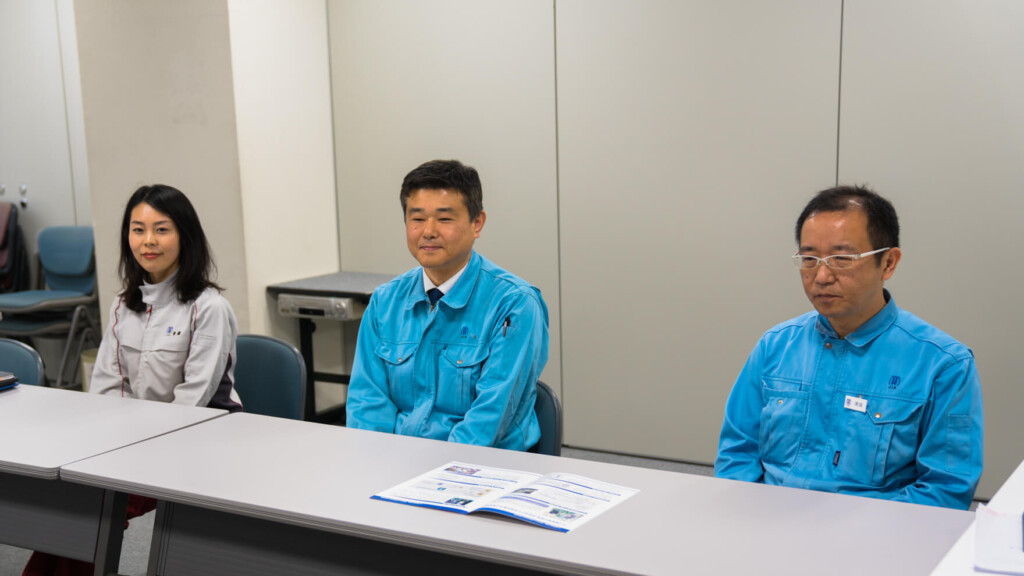
From left, Saito, Director Morishita, and Urasoe, Manager, Test Group Manager
The toughest in the world! ? Gas stove compatibility testing
There is a two-stage inspection of the compatibility test conducted not only for gas stoves used outdoors, but also for a wide range of gas equipment, including gas stoves and gas water heaters that are used daily.
In the first inspection, new products and improved products are submitted to the inspection agency at the finished product stage and inspected. In the next secondary inspection, when these are mass-produced at the factory, inspectors actually go to the manufacturer's factory to inspect the products that have been randomly extracted on the spot. In other words, from the design stage to the actual product produced in the factory, it must pass rigorous tests multiple times before it reaches the user's hands. It was truly impressive that the high level of demand for quality and the strictness of the inspections to prevent defective products. I think this is one of the reasons why gas stoves that have passed the Japanese gas inspection are highly regarded by the global outdoor industry.
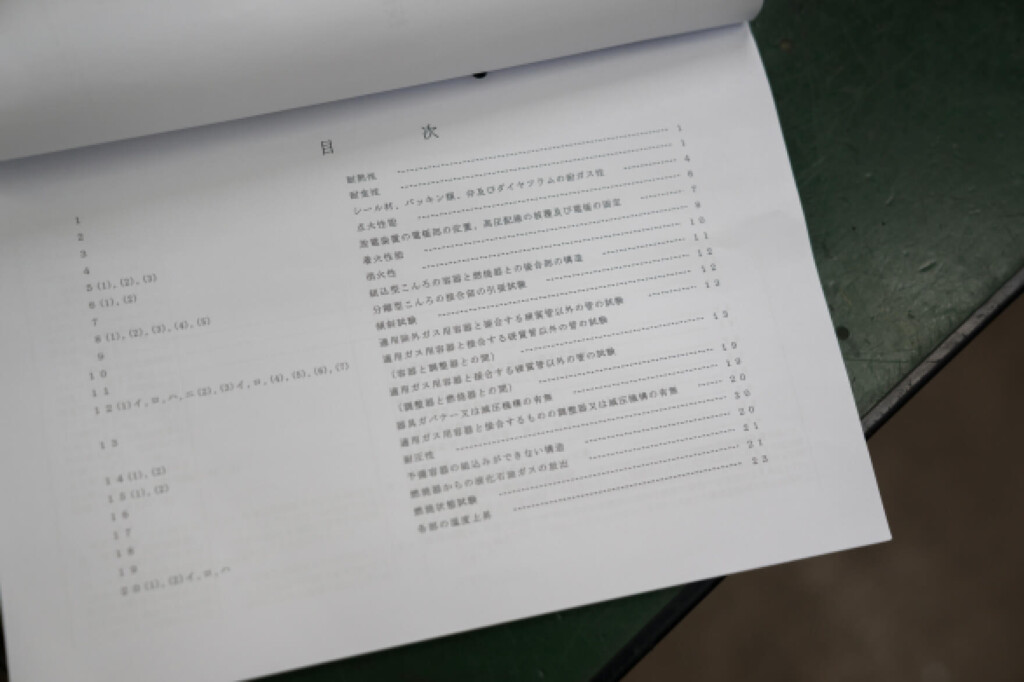
No matter what gas stove you use, the items to be inspected are a wide variety of items.
It's more serious than I imagined. This is a Japanese conformance test!
Once the classroom was over, I headed straight to the inspection center. After passing through the elevator and the intricate passage, we arrived at a room filled with bare equipment and parts, filled with a cluttered, "factory" feel. All of these are machines that inspect and measure something. It's a must-have place for spec fetishists.
This time, we were shown some of the compatibility tests that can be demonstrated in a short amount of time. When you think of a stove inspection, the first thing that comes to mind is, of course, whether it will burn properly and safely when it is set on.

A tool that measures the amount of exhaust gas during combustion, with a large number of holes made from a tube with a ring shape. How do I use it...
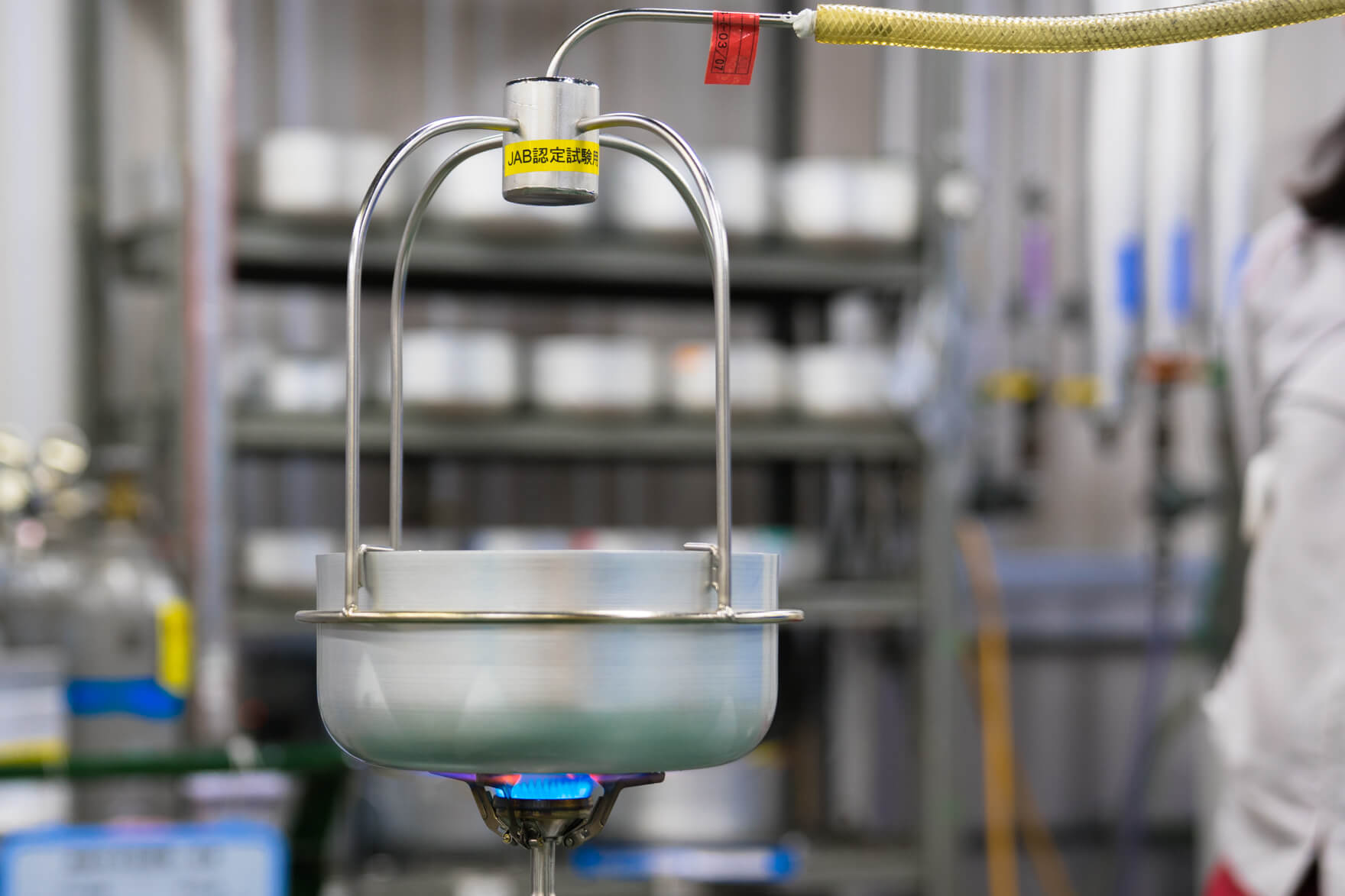
This is how it is covered in an inspection pot and collects gas that rises when it is burned. Measure the amount of gas components using a measuring instrument to check whether there are many harmful gases.

Testing temperature rise during combustion (the stove is located below the photo). At first glance, it is surrounded by seemingly ordinary walls...
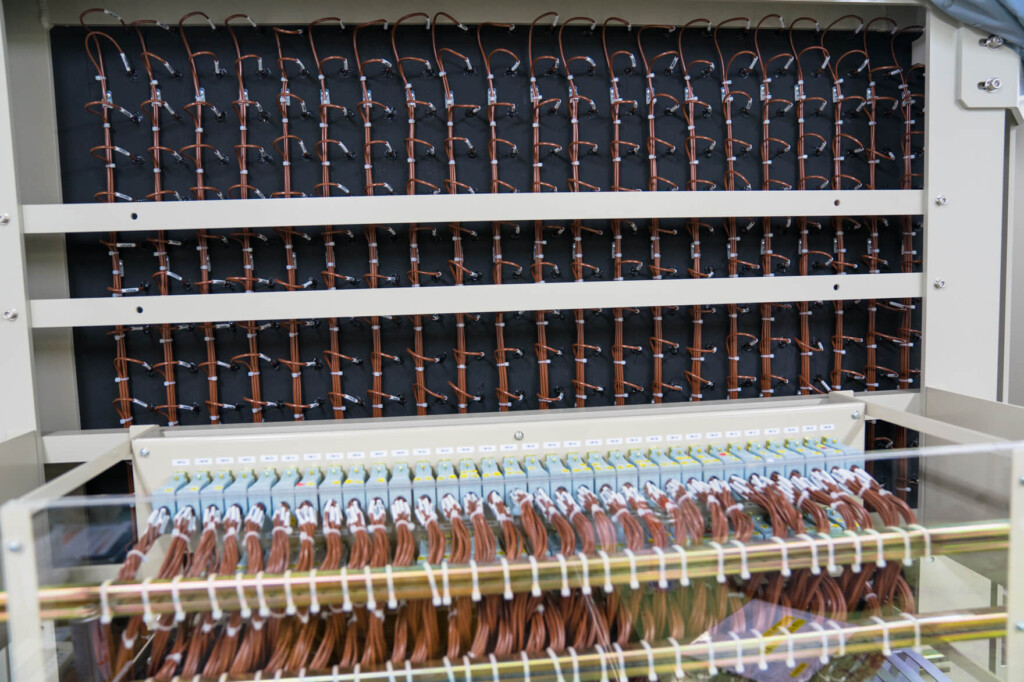
There are countless sensors attached to the back, and all measurements are taken to see how much the temperature of each part has risen over time. Of course, check that the equipment itself does not have excessive heat.
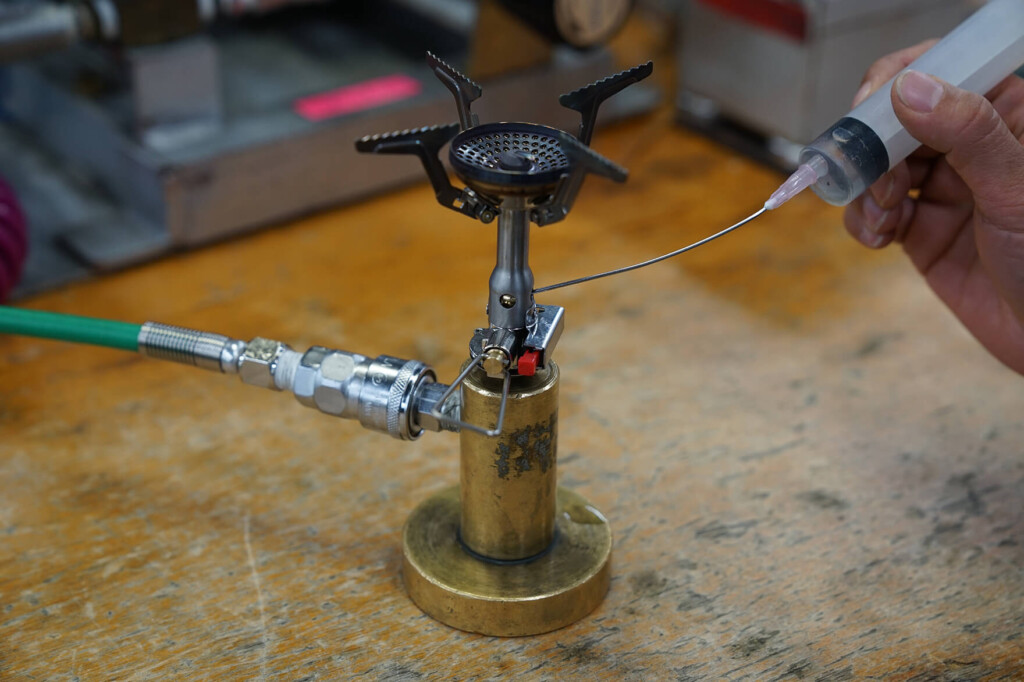
It was obvious that these combustion tests would be carefully checked from multiple angles, but what surprised me was the other more detailed inspection items. For reviewers like myself, I envy that they can always use inspection machines that simply keep the valve turning tens of thousands of times.
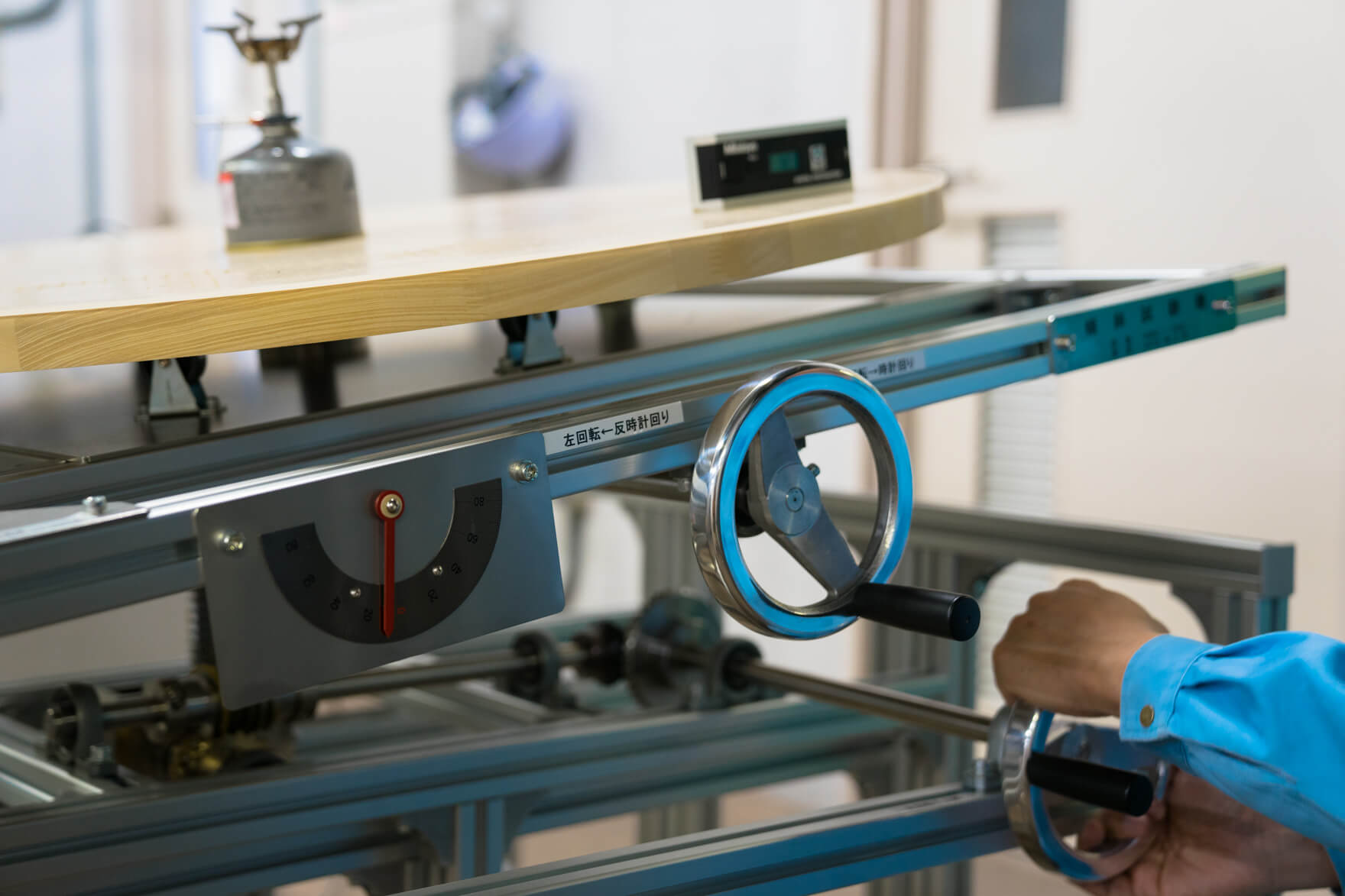
We also check whether the parts will fall over even if tilted to a certain extent, and whether the parts will fall apart, or if they drop to a certain extent, they will not break easily, such as whether the parts will not fall over or fall off, or if they drop to a certain extent, they will not break easily.
In addition, a wide variety of inspections and measurements are carried out using measuring devices that are only available in the testing room, such as gas cartridge content analyzers, pressure measuring devices, and devices that keep pushing the igniter in a non-uniform laboratory.
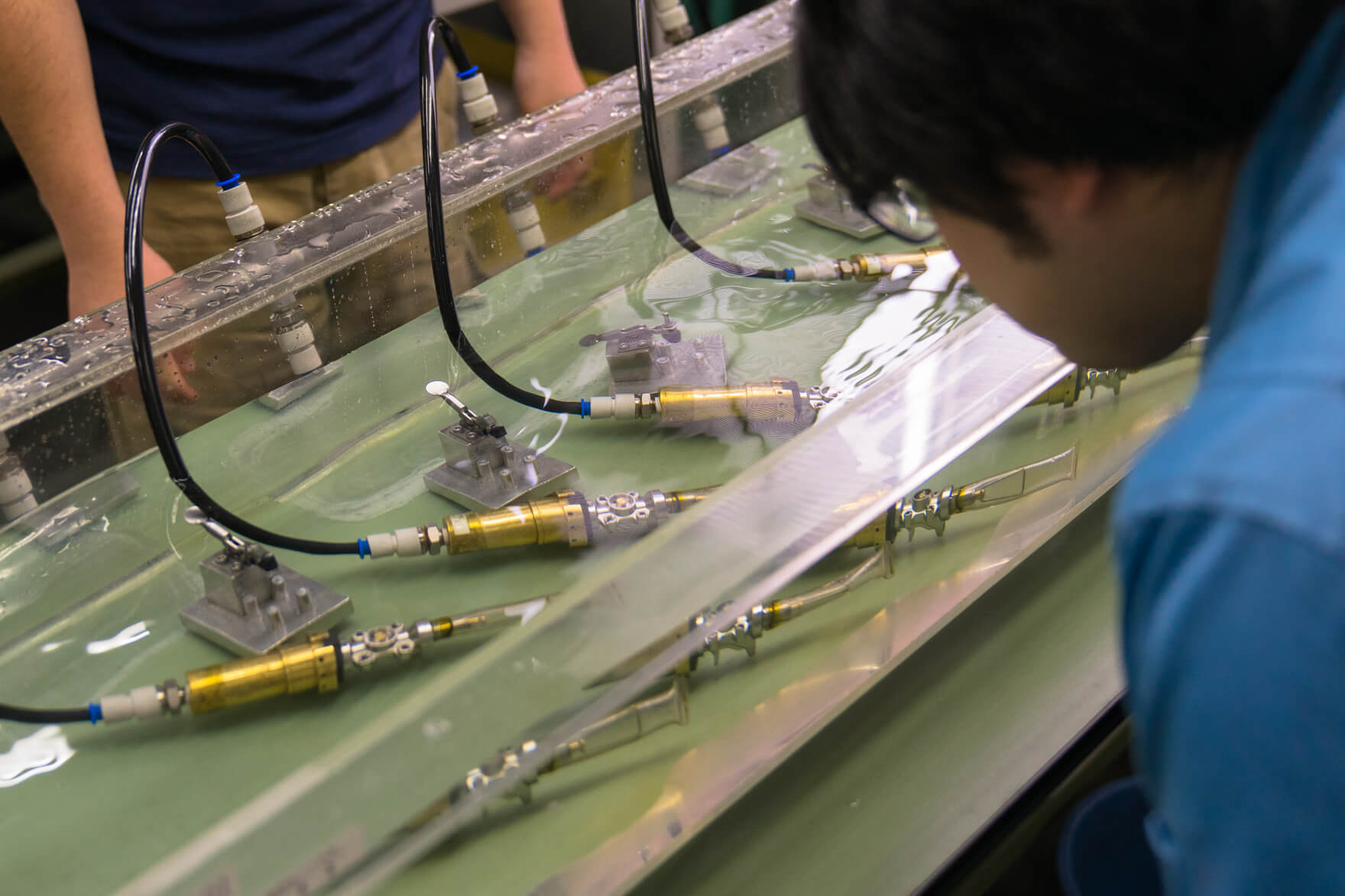
During the second inspection, inspectors actually go to the manufacturer's production factory and conduct rigorous inspections at the same level. The photo shows an airtightness test.
What is the "PSLPG Mark" title given only to those who pass a rigorous test?
Only after passing these strict tests in two stages and confirming that all items meet the criteria will you be able to display the title of passing, the "PSLPG Mark" that is the title of passing.
Recently, when mountain tools can be easily purchased through online shopping, some of them have sold surprisingly low-cost gas equipment, but these products may be models that have not undergone a compliant test in Japan, meaning that they have not been checked for safety.
The key to telling you whether a product has been inspected or not is the PSLPG mark, which is proof of a safe product, and only products that have passed this conformance test are allowed to be labeled. Does your gas stove come in neatly?
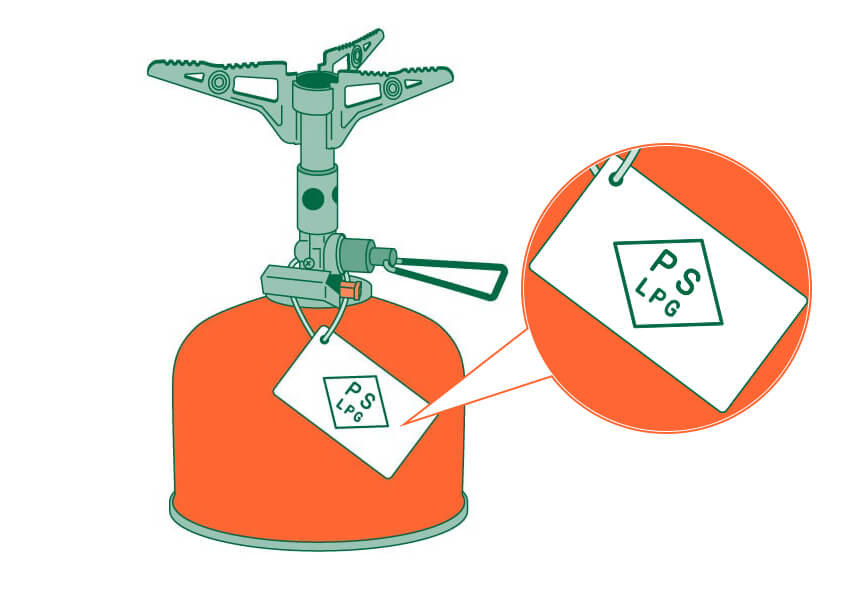
Gas stoves are stipulated by the Act on the "Act on Ensuring the Safety of Liquefied Petroleum and Optimizing Trade in Liquefied Petroleum Gas (Liquid Stone Act)" to display the PSLPG mark on products. Whether made in Japan or imported overseas products, they cannot be sold in Japan unless they have the PSLPG mark.
In recent years, the major problem has been that many imported products that have not acquired the PSLPG mark have been rapidly being circulated, mainly on the Internet.
Before purchasing a gas stove, check if you have obtained the PSLPG mark.
In short, products that do not have the PSLPG marked have not passed the inspection required for use within Japan. When purchasing a gas stove, be sure to check whether the product has a PSLPG mark properly.
Recently, manufacturers and stores that have clearly shown on their websites and online shopping sites that they have acquired the PSLPG mark are becoming more common. If you are unsure whether the product has the PSLPG mark on the site, you may want to check directly with the manufacturer or store.
No matter how safe the product is, be careful of carbon monoxide poisoning.
Since gas appliances are made from dangerous gas, gas, even if they are PSLPG marked, it goes without saying that if they are handled incorrectly, human lives will be put in danger. Carbon monoxide poisoning is a particularly life-threatening danger . Every person using a gas stove should always be aware of the risks and countermeasures of this carbon monoxide poisoning.
He suddenly let his guard down and ended up in a serious accident. What is the risk of carbon monoxide poisoning?
When using a gas stove in a place with poor ventilation, such as inside a tent, incomplete combustion occurs due to lack of oxygen, resulting in carbon monoxide. Carbon monoxide poisoning caused by inhaling without knowing this .
It is said that carbon monoxide is "colorless and odorless," and that early subjective symptoms of carbon monoxide poisoning are similar to those of the common cold (influenza), such as headaches, nausea, dizziness, poor concentration, vomiting, and drowsiness, making it difficult to notice that it has occurred
Depending on the concentration, the condition can progress to moderate or severe within a few minutes to a few minutes, and numbness in the arms and legs or loss of consciousness will prevent you from moving on your own, making it too late.
What you need to prevent dangerous carbon monoxide poisoning
To protect yourself from the risk of carbon monoxide poisoning, it is difficult to notice whether you are in a dangerous situation or your subjective symptoms, first prevent such a situation from occurring. Above all, it is important not to use it in places where ventilation is not sufficient.

Use of equipment in areas with poor ventilation is strictly prohibited!
Gas stoves should always be used outdoors, and you should never use gas equipment in a tent, car, or other indoor space just because it's cold outside. If it is difficult to get out of the tent due to rain or snow, open the entrance and ventilation as wide as possible to ensure that the air flows, and then cook in the vestibule.
If you are using a gas stove and experience symptoms like the ones above and feel "odd," stop using it immediately and move to a place with fresh air.
To ensure safe use, check and maintain before and after use.
Last but not least, check for failures before using a gas stove, and maintenance after use.
"O-ring" is a must-replace even if you use it correctly
The "O-ring" is a gas stove part that will always deteriorate over time, whether used or not. This is a rubber annular gasket located at the connection between the gas cartridge and the gas stove to prevent gas leakage.
Check if this O-ring is OK before ignition, especially if you haven't used it for a long time. If it is bitten, cut, shrink, or cracked, it can cause gas leaks. Make sure there doesn't seem to be any problems, and then connect the gas cartridge to the gas stove again and check for any noise or strange odors from the connection.

Look closely at the O-ring to check for any chips, cuts, shrinks, or cracks!
The lifespan of the O-ring is said to be around 5-7 years, and it is recommended to replace it with a new part. Instead of replacing the product yourself, replace it in the way that the manufacturer or retailer instructs you to do.
Furthermore, even if maintenance continues, each part will deteriorate over time. Therefore, many manufacturers recommend replacing gas equipment for 10 years from manufacture and 7 years from manufacture of gas cans.
Dirt stuck to the head also affects the heat.
Soot stains and fine waste on the head of a gas stove can affect combustion. To prevent this, gently remove any dirt and dust after use with a brush to remove any clogs. As this is a delicate part, do not rub it too hard and work carefully to avoid damaging it. Detailed maintenance methods may vary depending on the manufacturer, so please contact the respective retailer or manufacturer for details.
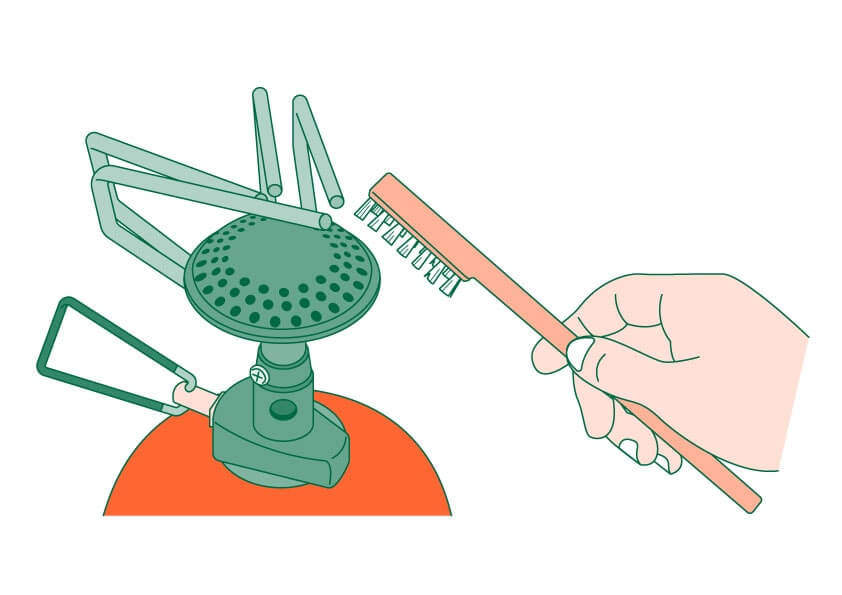
Gently remove clogged heads with a brush or something similar.
Check the igniter (ignition device) just in case
The igniter may also cause the interior to break down or rust due to some reason. Even if it doesn't seem to be a problem from the outside, make sure to press the switch to properly ignite it.
In some cases, ignition devices cannot be used (and do not ignite) depending on the environment such as high altitudes. Just in case, make sure to carry a flint lighter or something similar with you with you, just in case. Just because the fire did not start on site, do not immediately confirm that it is a malfunction, and try again when you return.
summary
It's a bit of a casual way, but behind the scenes where casually used gas stoves are used as if they were "natural", I was once again able to realize the reality that these diverse and rigorous tests are being carried out silly. When I witnessed the in-depth effort of the people on-site to ensure a more accurate inspection, I was sure to have a sense of empathy and respect. With a variety of support, we users are also able to enjoy the outdoors. You want to follow the minimum rules, such as checking the PSLPG mark before purchasing, regular inspections and maintenance, and have a safe and enjoyable outdoor life.
Supervised by: Japan Gas and Oil Equipment Manufacturers Association


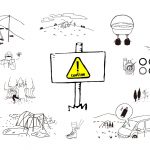 [Wait a minute for that action!] ] Summary of NG behaviors that you tend to do when climbing or camping
[Wait a minute for that action!] ] Summary of NG behaviors that you tend to do when climbing or camping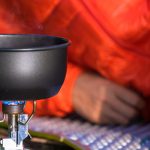 [Archive] 20 points you should know to use gas equipment more safely and conveniently
[Archive] 20 points you should know to use gas equipment more safely and conveniently